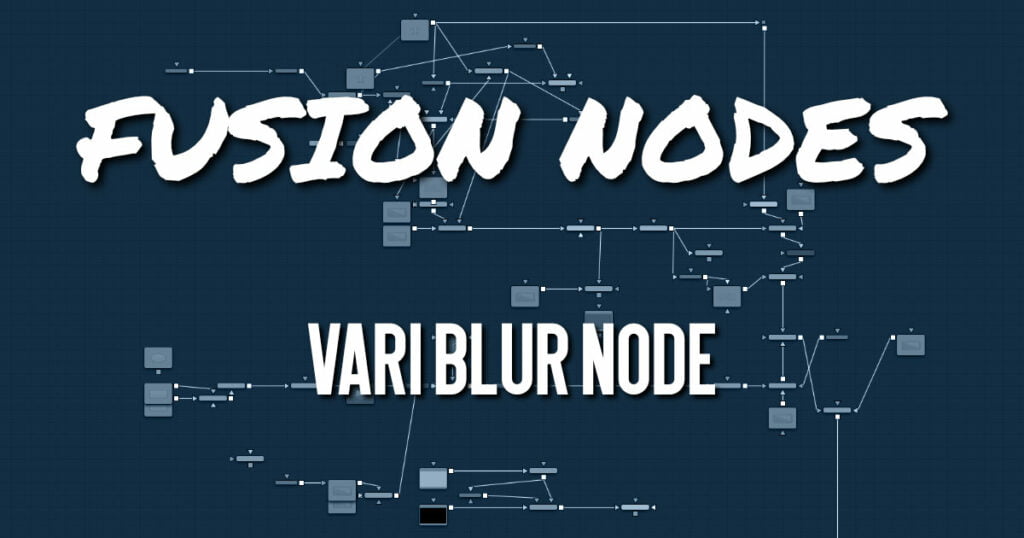
The Vari Blur node gives a true per-pixel variable blur, using a second image to control the amount of blur for each pixel. It is somewhat similar in effect to the Depth Blur node but uses a different approach for frequently cleaner results.
Vari Blur Node Inputs
There are two inputs on the Vari Blur node for the primary image: the blur map image, and an effect mask.
- Input: The gold image input is a required connection for the primary image you wish to blur.
- Blur Image: The green input is also required, but it can accept a spline shape, text object, still image, or movie file as the blur map image. Once connected, you can choose red, green, blue, Alpha, or luminance channel to create the shape of the blur
- Effect Mask: The optional blue effect mask input expects a mask shape created by polylines, basic primitive shapes, paint strokes, or bitmaps from other tools. Connecting a mask to this input limits the Vari Blur to only those pixels within the mask. An effect mask is applied to the tool after it is processed.
Vari Blur Node Setup
The Vari Blur node receives a 2D image like the MediaIn1 shown below. A gradient Background tool connects to the Blur image input to control the areas affected by the blur. The output continues the node tree by connecting to another 2D image-processing node or a Merge node.
Vari Blur Node Controls Tab
The Controls tab contains all the primary controls necessary for customizing the Vari Blur operation.
- Method
Use this menu to select the method of Blur used in the filter. The selections are described below- Soften: This method varies from a simple Box shape to a Bartlett triangle to a decent-looking Smooth blur as Quality is increased. It is a little better at preserving detail in less-blurred areas than Multi-box.
- Multi-box: Similar to Soften, this gives a better Gaussian approximation at higher Quality settings.
- Defocus: Produces a flat, circular shape to blurred pixels that can approximate the look of a defocus.
- Quality
Increasing Quality gives smoother blurs, at the expense of speed. Quality set to 1 uses a very fast but simple Box blur for all Method settings. A Quality of 2 is usually sufficient for low Blur Size values. A Quality of 4 is generally good enough for most jobs unless Blur Size is particularly high. - Blur Channel
This selects which channel of the Blur Image controls the amount of blurring applied to each pixel. - Lock X/Y
When selected, only a Blur Size control is shown, and changes to the amount of blur are applied to both axes equally. If the checkbox is cleared, individual controls appear for both X and Y Blur Size. - Blur Size
Increasing this control increases the overall amount of blur applied to each pixel. Those pixels where the Blur image is black or nonexistent are blurred, despite the Blur Size. - Blur Limit
This slider limits the useable range from the Blur image. Some Z-depth images can have values that go to infinity, which skew blur size. The Blur Limit is a way to keep values within range.
Vari Blur Node Settings Tab
The Settings tab in the Inspector is also duplicated in other Blur nodes. These common controls are described in detail HERE.










